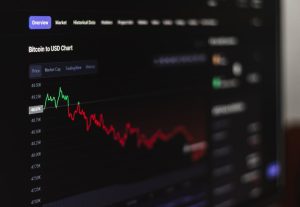Margin Requirements and Trading Strategies for Forex Traders
In the world of forex trading, understanding margin requirements and implementing effective trading strategies are crucial for success. Forex, short for foreign exchange, is the largest and most liquid financial market, where participants trade various currencies. To engage in forex trading, traders are required to open an account with a broker, and one essential aspect they need to be familiar with is margin requirements.
Margin requirements refer to the amount of funds a trader needs to have in their account to open and maintain a position. Forex trading is typically conducted on margin, which means that traders can control larger positions with a smaller amount of capital. This is because brokers provide leverage, allowing traders to multiply their buying power. For example, a broker offering a leverage ratio of 100:1 means that for every $1 the trader has, they can control a position of $100 in the market.
Understanding margin requirements is essential for traders to manage their risk effectively. When trading on margin, traders need to be aware of the concept of margin call. A margin call occurs when the account’s equity falls below the required margin level. In such a scenario, brokers will demand additional funds to bring the account back to the required level. Failure to meet a margin call may result in the broker closing out the trader’s position, potentially resulting in significant losses.
To avoid margin calls and manage risk, forex traders should develop and implement effective trading strategies. Here are a few popular strategies used by forex traders:
1. Trend Trading: Trend trading involves identifying and following the prevailing market trend. Traders aim to profit from the continuation of the trend until there are signs of a reversal. This strategy relies on technical analysis indicators and patterns to identify entry and exit points.
2. Breakout Trading: Breakout trading involves entering a trade when the price breaks out of a well-defined range or pattern. Traders look for strong momentum and volatility, anticipating that the breakout will lead to a significant price movement.
3. Carry Trading: Carry trading involves taking advantage of interest rate differentials between currencies. Traders aim to earn the interest rate differential by buying a currency with a higher interest rate while selling a currency with a lower interest rate. This strategy relies on both interest rate differentials and potential currency appreciation.
4. Scalping: Scalping is a high-frequency trading strategy that aims to profit from small price movements. Traders execute numerous trades throughout the day, holding positions for a short period, often a few seconds to minutes.
When implementing these strategies, traders must consider their margin requirements carefully. Higher leverage may amplify profits, but it also increases the risk of losses. It is crucial to establish a risk management plan, including setting stop-loss orders to limit potential losses and adhering to proper position sizing techniques.
Moreover, traders should stay updated with market news and economic indicators that can impact currency prices. Fundamental analysis, which involves assessing economic and political factors, can provide valuable insights into potential market movements.
In conclusion, understanding margin requirements and implementing effective trading strategies are fundamental for forex traders. Margin requirements determine the amount of funds needed to open and maintain positions, while trading strategies help traders to manage risk and potentially profit from the forex market. Traders should carefully consider their risk tolerance, set realistic profit targets, and stay informed about market conditions to make informed trading decisions.





